ジェフ・キッシュのHIKER LIFE with PNT | #04 パシフィック・ノースウエスト・トレイルの「 “withコロナ” のフィールド安全対策」
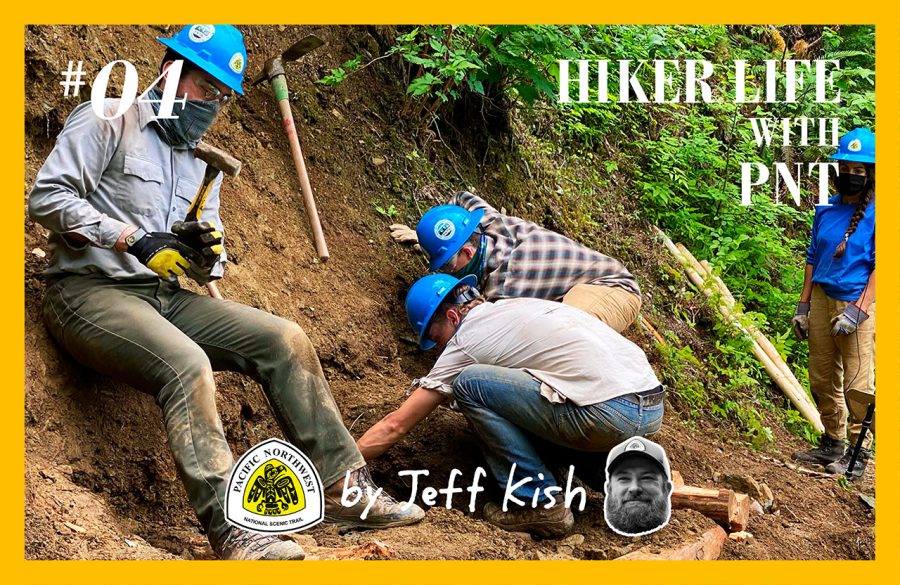
The Pacific Northwest Trail in the age of COVID-19.
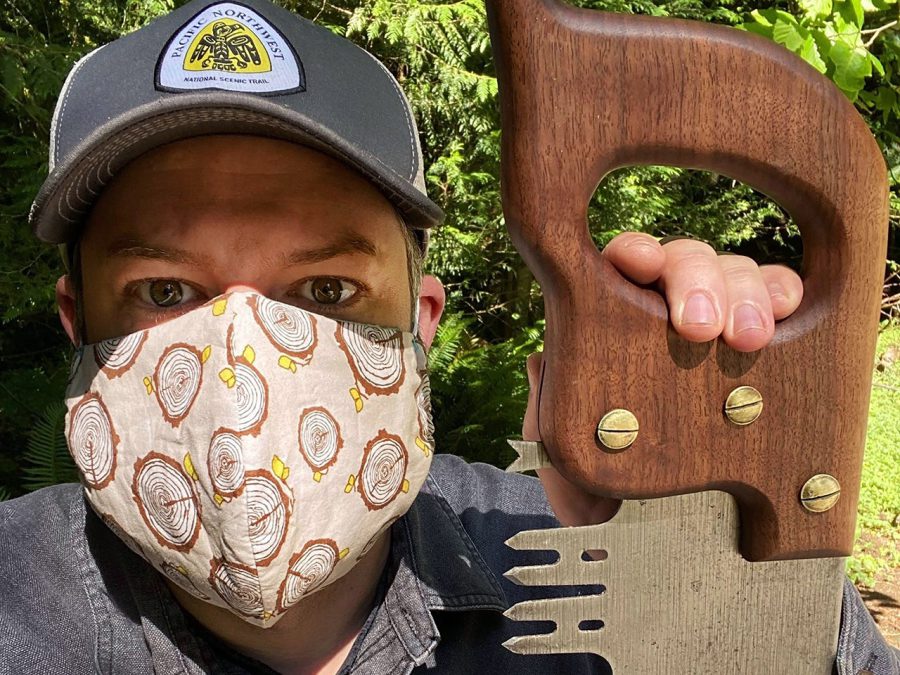
In the midst of a global pandemic, retreating from society and onto one of the world’s most remote backcountry trails might sound like a good idea, but the Pacific Northwest Trail, and the communities that it connects, are not immune to the impacts of COVID-19.
As with any trail, the PNT is more than just a strip of dirt, and while the PNT experience is noted for its supremely wild character and ample opportunities for solitude, the truth is that all journeys on the PNT are dependent on the contributions of countless people along the way, including the staff and volunteers at the Pacific Northwest Trail Association.

The first cases of COVID-19 in the United States were identified in late January, right here in Washington state, where the Pacific Northwest Trail Association (PNTA) headquarters is located, and where 900 miles of the Pacific Northwest Trail wanders. At the time, the US government sought to downplay the seriousness of the virus, and assured the public that it would soon “disappear” from our country. By early March, it was apparent that this wouldn’t be the case.
At the beginning of the month, we were in the midst of planning a collaborative event with the American Long Distance Hiking Association-West (ALDHA-West), called the North Cascades Ruck. It would be the first event that PNTA would host in our new office, and we were excited to invite the local long distance hiking community in to see our new space.
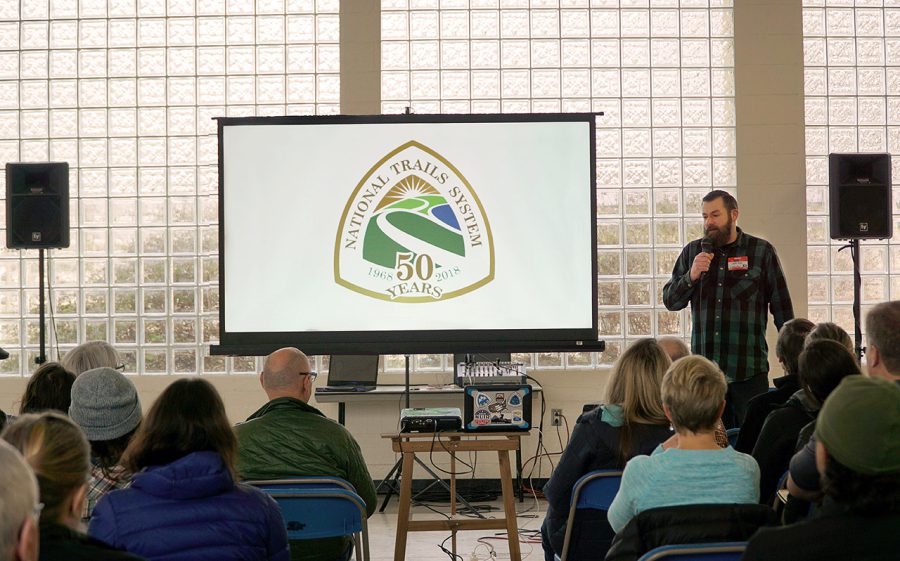
Our Regional Coordinators had begun to recruit a large team of seasonal staff for the upcoming trail maintenance season, and our Outreach and Engagement Intern had been working hard to create and promote volunteer opportunities along the length of the trail. Our Communications Manager was busy planning a full schedule of public events to take place throughout the spring. This was “business as usual” for the PNTA. Then everything changed.
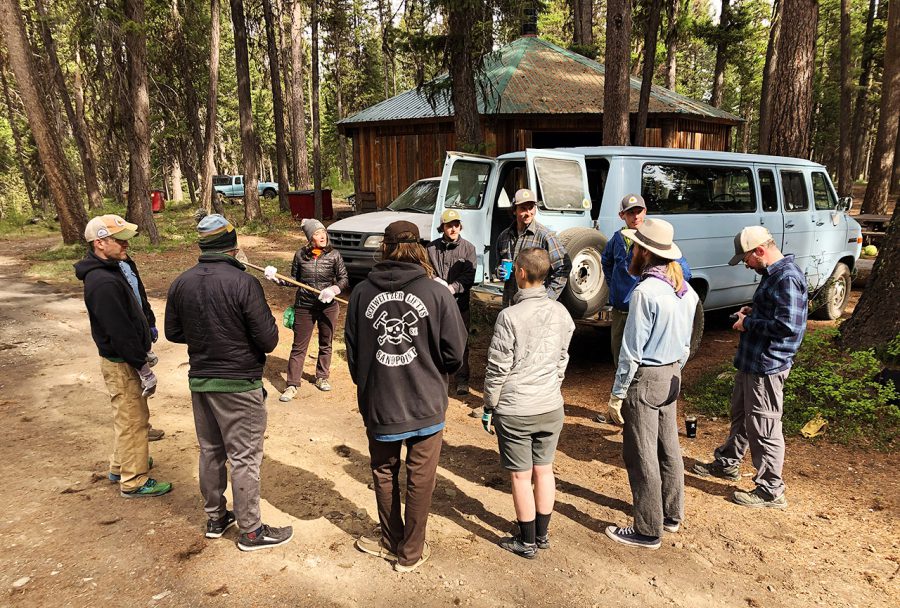
By mid March, we had canceled the Ruck. Then we canceled all public events indefinitely. By late March, our state issued a “shelter in place” order, and all of our full time staff transitioned to working from home. Looking forward, it was clear that COVID-19 could put one of our most important programs in jeopardy. Could trail maintenance continue during a global pandemic?
With so much at stake, and with other programs paused, I instructed my staff to work together and prioritize the development of a COVID-19 Field Safety Manual. At this point, the land managers that we work with had been silent on how COVID-19 might impact future activities on public lands, but having a good plan seemed like the best way to keep our employees safe if they would be permitted to work, and we assumed that their access to the land might soon become contingent on it.
Over the next month, our team thoroughly researched what global health experts were reporting about the virus, and examined every element of our trail maintenance program to identify vulnerabilities and create new directives to protect our team members from spreading or contracting the virus in the field. This was exciting work, because the circumstances of working on a backcountry trail crew are unique, and to the best of our knowledge, no one else had yet created a comprehensive field safety manual for COVID-19 like the one we were about to release.
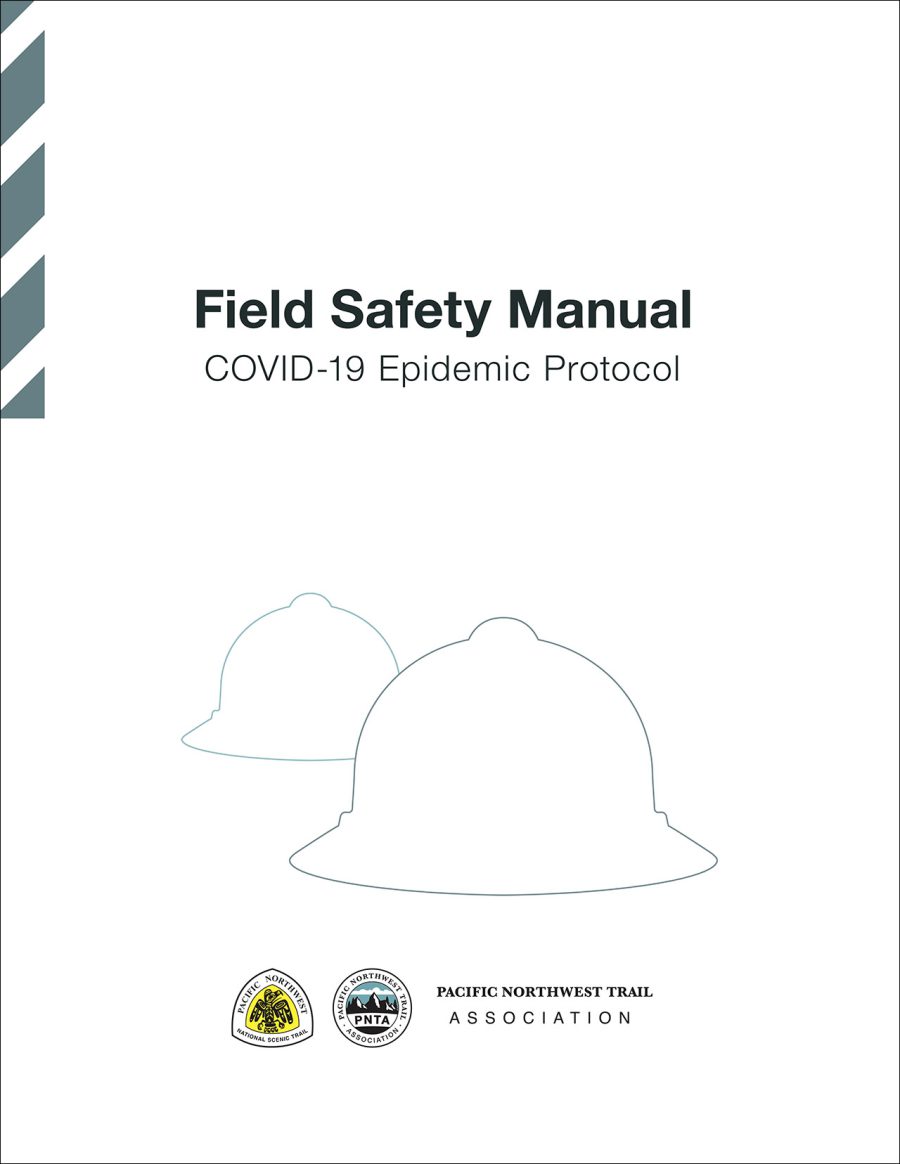
By April, the PNTA shared a draft of our COVID-19 Field Safety Manual with close partners and representatives from the Pacific Northwest Regional Office of the United States Forest Service. The plan immediately garnered attention within the agency, and began to spread to other Forest Service Regions in a time when the agency was still working to develop their own risk assessments and safety protocols, and other partner organizations were looking for guidance on how to deal with COVID-19 themselves.
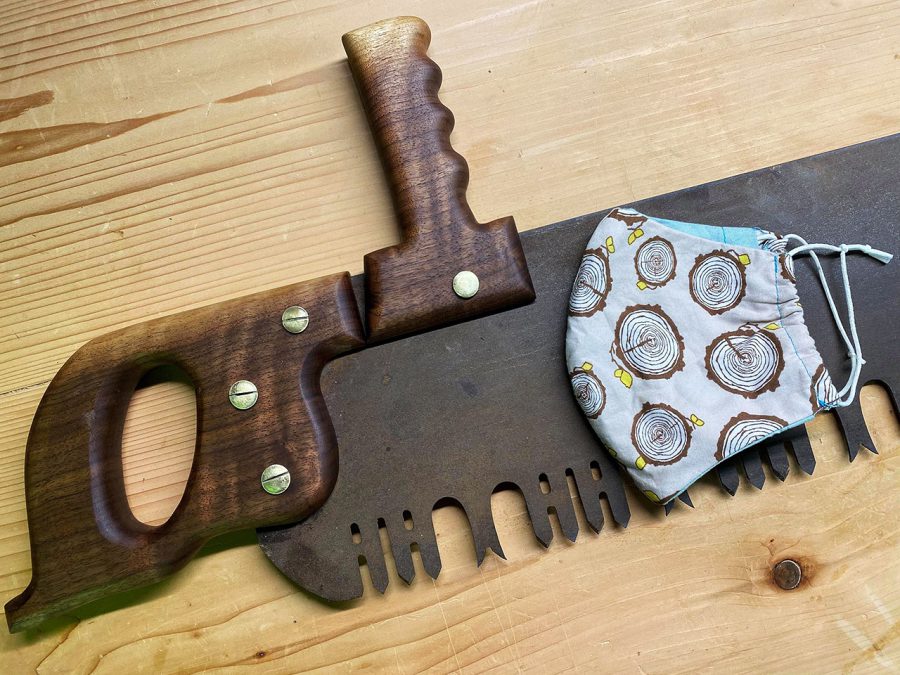
Soon, we began receiving calls and emails from recreation and conservation groups from across the country, letting us know how elements of our plan were being adopted to put trail maintainers and other conservation professionals back to work in wild places all over the United States.
While we were pleased with our effort, and the praise we had received from our partners and colleagues increased our confidence in what we had developed, by early June, we still had yet to test our plan in the field with the seasonal employees who would be asked to implement the new direction.
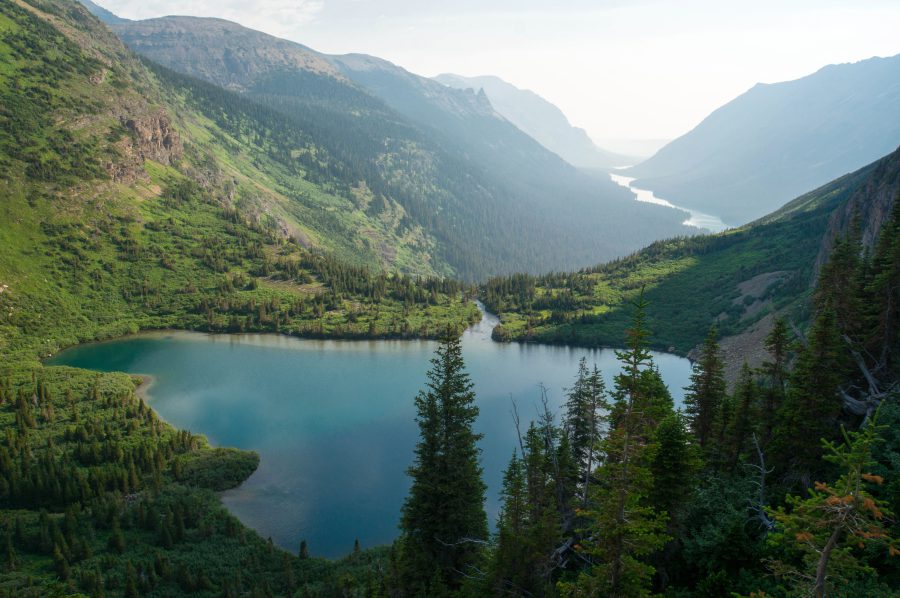
The PNTA carries out over 90% of our trail maintenance with youth and young adults from trailside communities in 8 to 10 day “hitches” that allow the crews to penetrate deep into the backcountry to perform essential maintenance tasks in some of the most remote places in our country. To prepare for trail maintenance in the age of COVID-19, our first hitch of the season involved bringing together all of our Crew Leaders — the highly trained and experienced individuals with the responsibility of leading the other crew members in safe and productive backcountry work — for training and certification. This also provided us the opportunity to test how challenging the new safety protocols would be to implement in the field.
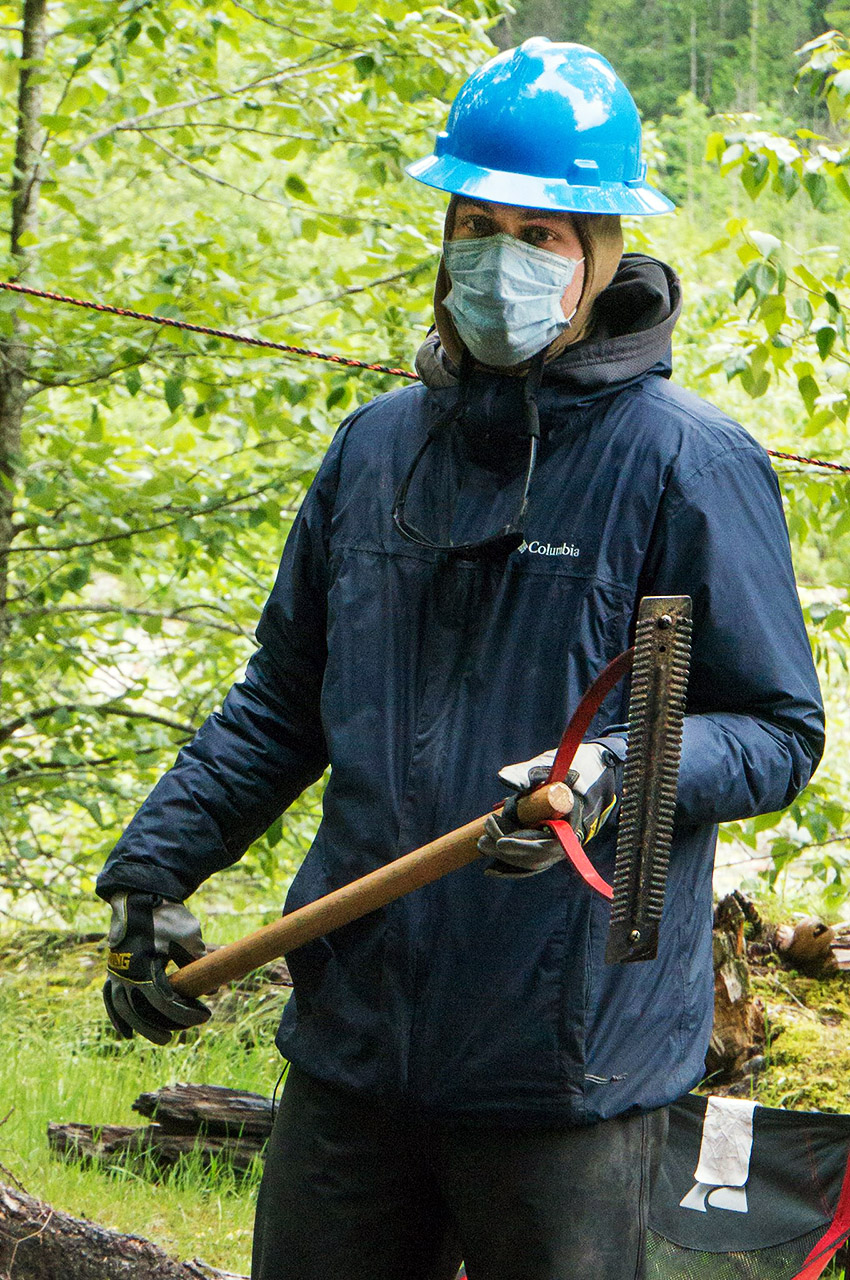
For this first hitch, the team met on the PNT at Baker Lake. This low elevation section of the trail is a favorite location for early-season maintenance work, while much of the rest of the trail is still emerging from the winter snow in the high country. With masks on, and careful attention to distancing, the Crew Leaders got to work restoring this popular backpacking destination. They also tested the key elements of our COVID-19 plan. Would this be practical to do all summer?
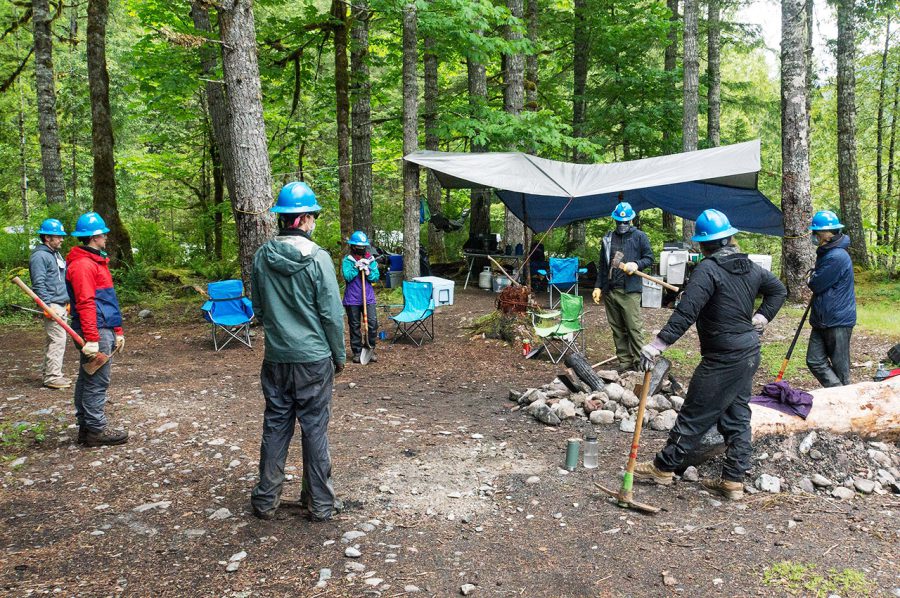
Trail maintenance is hard work; even more so when wearing a mask and other special protective equipment, but it turns out that the way the PNTA operates trail crews is uniquely suited for providing for the safety of our teams. The small group size of PNTA crews, and the fact that they work on dedicated teams, where the same individuals live and work together all summer, significantly lowers the risk of transmission within our organization.
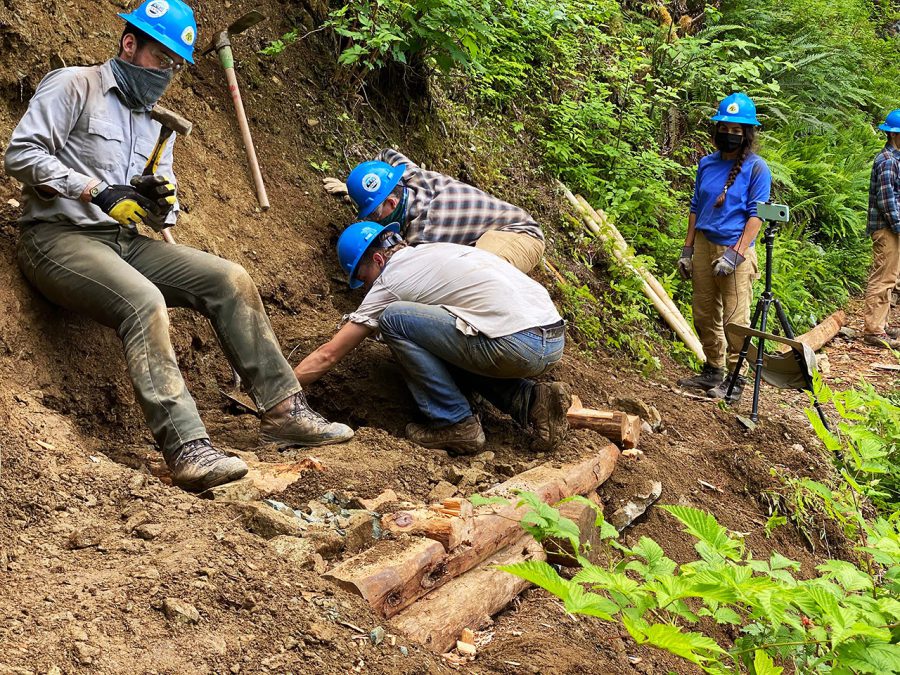
The distance that crew members must hike and work from one another in order to maintain safety while transporting and swinging sharp tools enforces the distancing required of the pandemic. Living and working outside reduces the risks associated with recirculated air in indoor settings. The strenuous work keeps the crew members’ bodies and immune systems healthy and strong.
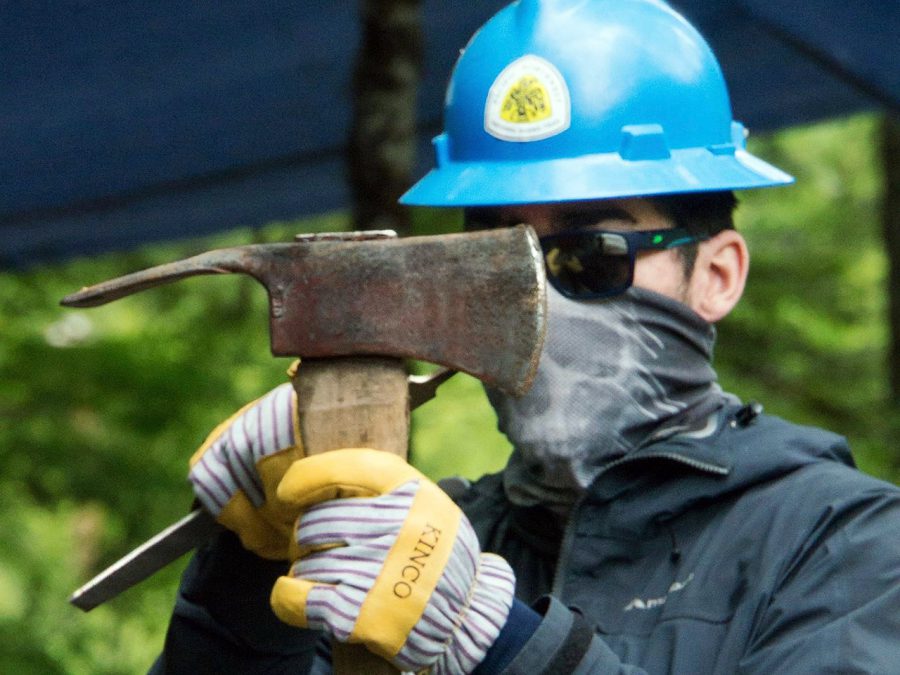
While some elements of trail life during a pandemic are new, such as pre-hitch health screenings, increased vigilance during group activities like meal preparation, and highly detailed evacuation and quarantine plans, I think the extra diligence is proving well worth the opportunity to perform such meaningful work in some of America’s most beautiful and wild places.
As I write this, those Crew Leaders are now out in the field with their crews, all across the length of the PNT, on their third hitches of the season. While it’s hard to know with their masks on, I imagine there are smiles on their faces.
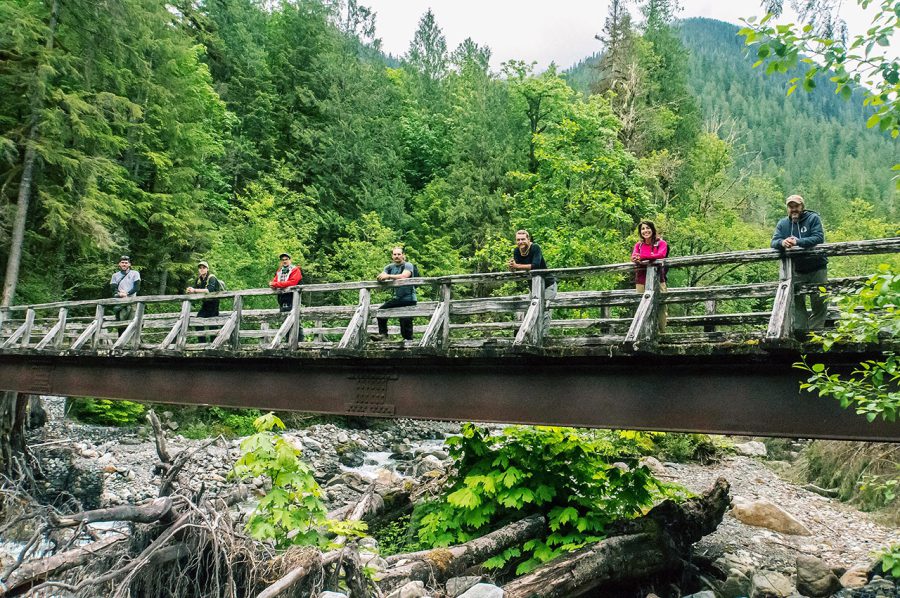
Related Articles
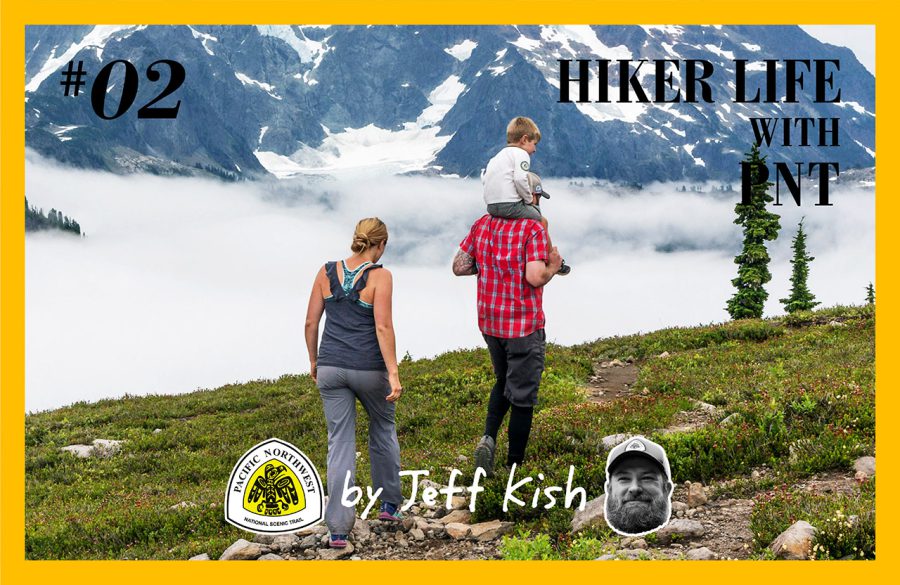
ジェフ・キッシュのHIKER LIFE with PNT | #02 パシフィック・ノースウエスト・トレイルでのファミリー・ライフ
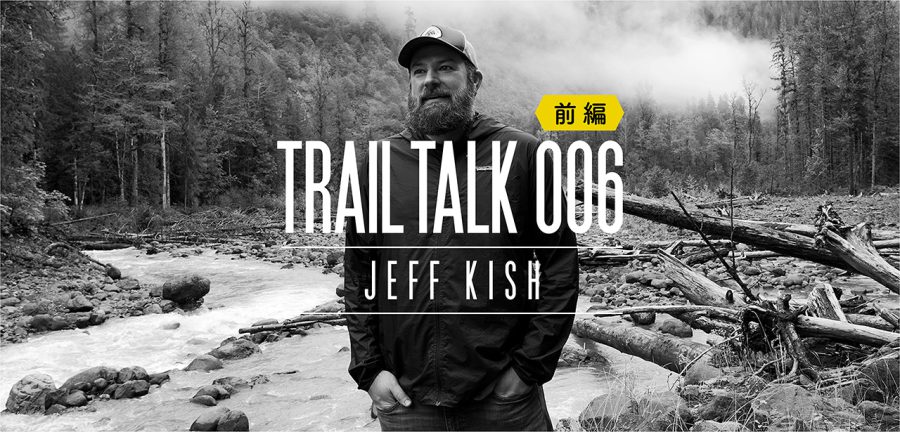
TRAIL TALK #006 JEFF KISH / ジェフ・キッシュ(前編)
- « 前へ
- 2 / 2
- 次へ »
TAGS:

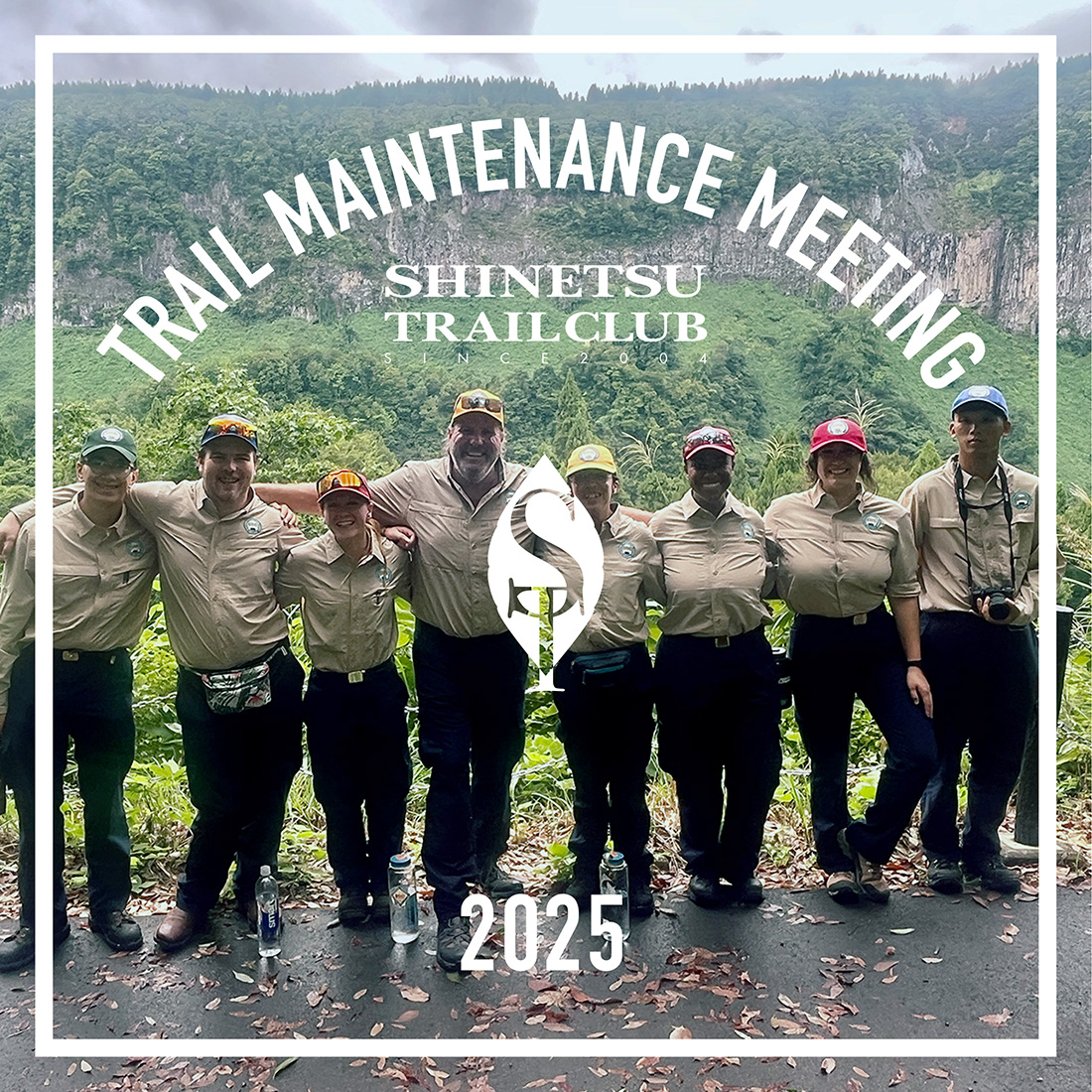

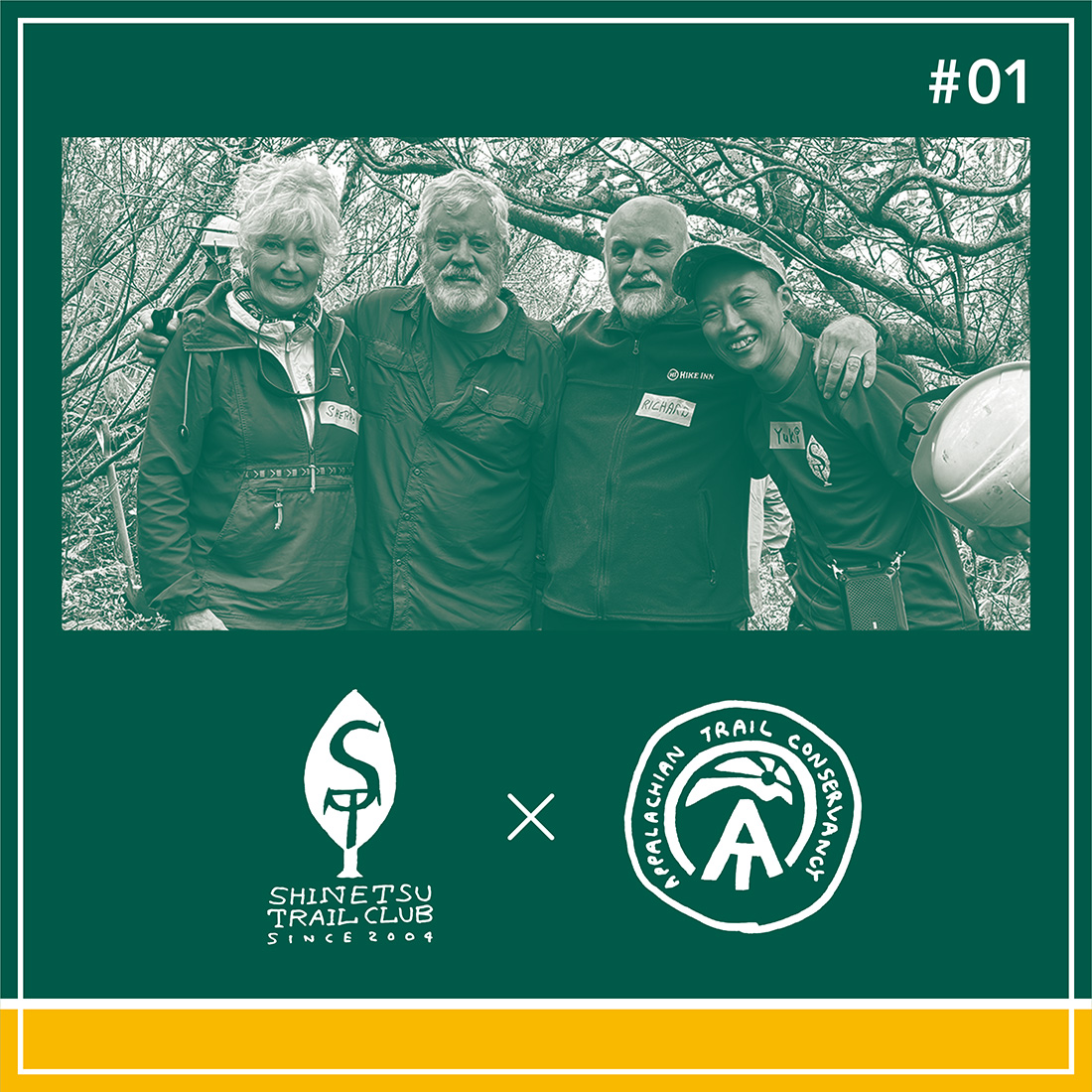










 ULギアを自作するための生地、プラパーツ、ジッパー…
ULギアを自作するための生地、プラパーツ、ジッパー…  ZimmerBuilt | TailWater P…
ZimmerBuilt | TailWater P…  ZimmerBuilt | PocketWater…
ZimmerBuilt | PocketWater…  ZimmerBuilt | DeadDrift P…
ZimmerBuilt | DeadDrift P…  ZimmerBuilt | Arrowood Ch…
ZimmerBuilt | Arrowood Ch…  ZimmerBuilt | SplitShot C…
ZimmerBuilt | SplitShot C…  ZimmerBuilt | Darter Pack…
ZimmerBuilt | Darter Pack…  ZimmerBuilt | QuickDraw (…
ZimmerBuilt | QuickDraw (…  ZimmerBuilt | Micro Pack …
ZimmerBuilt | Micro Pack … 














